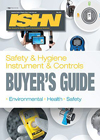
In 2006, FEMA-contracted installers built an entrance stairs for this mobile home in the 40-unit FEMA mobile home park in LaPlace, St. John Parish, LA.
In an email sent this July to colleagues, Mary DeVany wrote: “Post Hurricanes Katrina and Rita, the Federal Emergency Management Agency (FEMA) issued over 200,000 families travel trailers as temporary living quarters. About 60,000 households affected by Katrina remain in trailers.
“Almost immediately thousands of people began experiencing adverse health effects that we have subsequently traced to high levels of formaldehyde emissions. To date, very little has been done by FEMA to ameliorate this serious health hazard; although in July, in a stunning act of misguided benevolence — government officials proposed using the surplus trailers that hurricane victims vacate to house Native Americans.
“During most of this last year and a half I have been advising the Sierra Club regarding these formaldehyde exposures. On July 19, I testified at a hearing held by the U.S. Congressional Committee on Oversight and Government Reform, chaired by Congressman Henry Waxman (D-CA), on the issues surrounding these FEMA trailers and the subsequent adverse health effects experienced by the hurricane victims living in those trailers.”
“Quite an experience”
“It was quite an experience, I must say,” she described in a follow-up email. “It was my job to be able to explain all the health effects of formaldehyde, how it gets into the materials during the manufacturing process, how to detect and sample for formaldehyde, what all the various exposure limits mean, and how to abate the problem.
“At the hearing, we were sworn in, had five minutes to talk, then each Congressman had five minutes to question us. I practiced my oral testimony so many times during the night before the hearing (I couldn’t sleep at all ) that when my turn to testify came up, rather than being nervous, I think I just went on auto-pilot!
“In the subsequent 24 hours, I got calls for help from a U.S. senator and two congressmen; interviews from news media as varied asThe New York Timesto theNative American Times; was on CBS, NBC, ABC and all the cable news channels; and was quoted in an article on the front page of theWashington Post(see below) and many, many other papers here in the U.S. as well as Europe. I guess I’ve now had my five (not even 15) minutes of fame!”
Meet the press
Here’s the July 19thWashington Postheadline: “FEMA Suppressed Health Warnings for Workers, Katrina Victims; Agency Rejected Environmental Testing on Formaldehyde Gas Levels.”
The article reported that nearly 5,000 pages of documents turned over to the committee “expose an official policy of premeditated ignorance,” Waxman charged. “Senior officials in Washington didn’t want to know what they already knew, because they didn’t want the legal and moral responsibility to do what they knew had to be done.”
The Sierra Club in May 2006 reported finding unsafe levels of formaldehyde in 30 out of 32 trailers it tested along the Gulf Coast, according to the report.
FEMA Director R. David Paulison apologized to Congress for withholding information and said “in hindsight” FEMA should have started testing trailers earlier.
According to thePostarticle, in May, FEMA said its own tests of 96 new trailers near Baton Rouge last September and October found formaldehyde at 1.2 parts per million, but levels dropped to 0.3 parts per million after four days of ventilation. FEMA said that is the accepted threshold used by the Department of Housing and Urban Development for its manufactured homes.
ThePostaccount continued: “Mary C. DeVany, an occupational health and safety engineer advising the Sierra Club, testified that that exposure limit of 0.3 parts per million is 400 times greater than the normal limit for year-round exposure set by the CDC-affiliated Agency for Toxic Substances and Disease Registry. It is also three times the daily exposure limit recommended by the National Institute for Occupational Safety and Health, she said.
“This misapplication and skewing of scientific results is at best unethical and grossly misrepresents an attempt to minimize the adverse health effects being experienced by thousands of travel trailer residents,” DeVany testified.
High levels of formaldehyde were still found in nearly all trailers sampled, whether continuously ventilated or air conditioned, DeVany said.
ThePostsaid DeVany called on FEMA to relocate without delay people living in trailers with levels above 0.05 parts per million and not to turn over any trailers for re-use without testing.
Sound bite definition
For those of you who one day meet the press (or testify before Congress), here’s how DeVany described her work in her testimony:
“I have been an occupational and community health and safety engineer (industrial hygienist) for 30 years. Industrial hygienists are guardians of occupational and community health and safety; we are scientists who work like community and workplace detectives — searching for hazards and exposures that may impact health and safety. We devise methods to eliminate or at least limit and control these harmful conditions — including exposures to harmful chemicals, noise, biological contaminants, radiation, vibration and other physical hazards to protect community and workplace health and safety.”
Call for action
And here was DeVany’s call for action, taken from her written testimony: “When formaldehyde is present in the air at levels exceeding 0.1 ppm, many individuals may experience health effects such as watery eyes; burning sensations of the eyes, nose, and throat; coughing; wheezing; nausea; and skin irritation. Some people are very sensitive to formaldehyde, while others have no reaction to the same level of exposure.
“In July 2006, FEMA developed and implemented an air monitoring and sampling plan to establish and verify methods to reduce the presence of formaldehyde fumes in travel trailers. The sampling was conducted by the Environmental Protection Agency (EPA) and the data were analyzed by the ATSDR (Agency for Toxic Substances and Disease Registry), which is affiliated with the Centers for Disease Control, at the U.S. Department of Health and Human Services (HHS).
“The results of this study showed high levels of formaldehyde in nearly all of the trailers, whether they were continuously ventilated or were kept cool through air conditioning. Without giving any explanation, although the ATSDR has an exposure limit of 0.008 ppm for exposures of 365 or more days, rather than use this limit when analyzing EPA’s air sampling of FEMA’s trailers, the ATSDR arbitrarily chose a limit of 0.3 ppm as their ‘level of concern’ and applied this high level to the results as if it were a safe and applicable exposure limit.
“This level is nearly 400 times the ATSDR’s limit for people exposed more than 365 days, as the hurricane victims living in travel trailers are, and resulted in a bizarre skewing of the sampling results interpretation.
“We need to help these victims return to normal lives. Thousands of families with 3, 4, 5 or more members are living in these small trailers. This amount of people taking showers and simply living in such cramped space causes mold formation and other additional adverse health impacts.
“FEMA needs to test and assure all trailers have safe formaldehyde indoor air concentrations immediately, then relocate without delay people living in trailers with levels above 0.05 ppm. Also, trailers must not be sold or donated to Native Americans or others without this testing being done to assure safe air quality.
“An additional necessary action item includes assuring all new trailers have safe formaldehyde indoor air concentrations. Clearance sampling (testing the formaldehyde level in each trailer prior to acceptance/delivery) must be done. If a trailer is found to be above standard, it poses a potential health concern to its occupants and FEMA should not accept delivery of the trailer.
“Lastly, FEMA needs to educate trailer occupants of formaldehyde health effects and give them options for relocation.”


